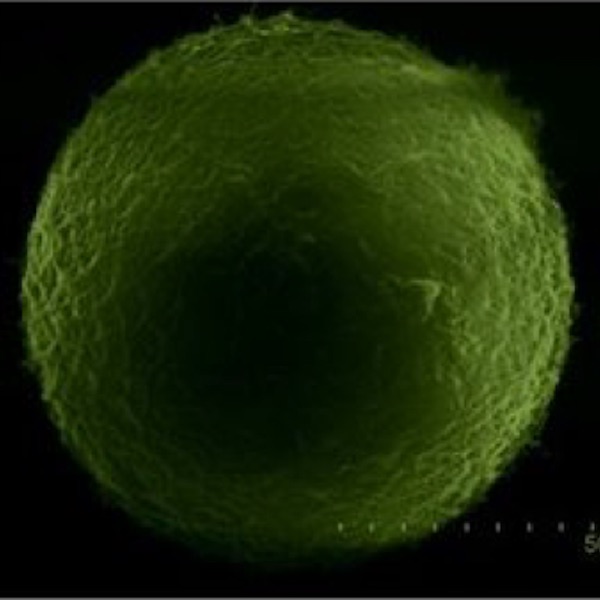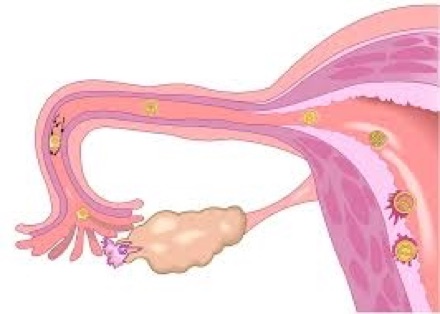Embryology & Implantation Research
Identifying the health of the embryo through genetic or non-invasive methods to enable selection and transfer of embryos with the greatest implantation potential

Identifying a Good Embryo
From a successful IVF cycle, a female will produce one to several good-quality embryos for transfer. However, choosing which of these embryos will have the best chance of growing in the uterus is a difficult task that has, up to now, largely relied on how the embryo looks. We are using new, advanced technologies to identify factors that are released by embryo in culture media which are indicative of good implantation potential. Using normally discarded biological material that is left over from the IVF procedure to identify these factors, we hope to advance our ability to choose the embryo with the greatest potential to establish a healthy pregnancy.

Improving Receptivity of the Uterus
Uterine receptivity plays a major role in embryo implantation. Without a healthy endometrium to attach to, transferred embryos have a lower chance of initiating a pregnancy. We are currently working on therapies with great promise to improve the growth and receptivity of the endometrial cells that line the uterus. These studies are taking advantage of cells that are normally discarded after routine sonohysterograms or endometrial scratching procedures, and studying their growth in a dish under different conditions. We hope that establishing methods for optimally supporting the health of these cells, will lead to new therapies to improve the quality of the endometrium for embryo implantation.
Other publications
- Gat I, Aikudmani B, Wong K, Zohni K, Weizman NF, Librach CL, Sharma P. Significant correlation between anti-mullerian hormone and embryo euploidy in subpopulation of infertile patients. Reprod Biomed Online. 2017 Nov;35(5):602-608.
- Zohni KM, Gat I, Librach CL. Recurrent implantation failure: a comprehensive review. Minerva ginecologica. 2016 Dec;68(6):653-67
- Balakier H, Sojeckie A, Motamedi G, Librach CL. Impact of multinucleated blastomeres on embryo developmental competence, morphokinetics, and aneuploidy. Fertility and Sterility. 2016 Sep 1;106(3):608-614
- Dar S, Librach CL, Gunby J, Bissonnette F, and Cowan L. Increased risk for preterm birth in singleton pregnancies after blastocyst vs. day 3 embryo transfer – Canadian ART Register (CARTR) analysis. Human Reproduction. 2013 Apr 1;28(4):924-928
- Balakier H, Xiao R, Zhao J, Zaver S, Dziak E, Szczepanska K, Opas M, Yie S, Librach CL. Expression of survivin in human oocytes and preimplantation embryos. Fertility and Sterility. 2013 Feb;99(2):518-525
- Dar S, Lazer T, Shah P, Librach CL. Neonatal outcomes among singleton births after blastocyst versus cleavage stage embryo transfer: A systematic review and meta-analysis. Human Reproduction Update. 2013;20(3):439-448
- Balakier H, Sojecki A, Motamedi G, Siamak, Bashar, Mandel R, Librach CL. Is the zona pellucida thickness of human embryos influenced by women’s age, and hormonal levels? Fertility and Sterility. 2012 Jul;98(1):77-83
Research Areas
Latest publications
- Nguyen TTTN, MacDougall M, Kwok YSS, Russell SJ, Librach CL. Human platelet lysates stimulate in vitro proliferation of human endometrial cells from patients with a history of recurrent implantation failure. Fertil Steril. 2022 Feb 1;3(1);64-73.
- Kuznyetsova I, Kuznyetsov V, Balakier H, Librach CL. Selecting Developmentally Competent Human Blastocysts: From Basic Morphological Assessment to Morphokinetics and Preimplantation Genetic Testing for Aneuploidy. Sci J Biol. 2020 Dec 09;3(1): 031-041.
- Balakier H, Kuznyetsova I, Librach CL. The impact of hyaluronan-enriched culture medium and intrauterine infusion of human hCG on clinical outcomes in blastocyst transfer cycles. Systems Biology in Reproductive Medicine. 2020 Apr;66(2):79-88.
- Russell SJ, Menezes K, Balakier H, Librach CL. Comprehensive Profiling of Small RNAs in Human Embryo-Conditioned Culture Media by Improved Sequencing and Quantitative PCR Methods. Systems Biology of Reproduction. 2020 Apr;66(2): 129-139.
- Vyas P, Balakier H, Librach CL. Ultrastructural identification of CD9 positive extracellular vesicles released from human embryos and transported through the zona pellucida. Systems Biology in Reproductive Medicine. 2019 Aug;65(4):273-280.
- Weizman NF, Wyse BA, Antes R, Ibarrientos Z, Sangaralingam M, Motamedi G, Kuznyetsov, Madjunkova S, Librach CL. Towards improving embryo prioritization: parallel next generation sequencing of DNA and RNA from a single trophectoderm biopsy. Scientific Reports. 2019 Feb 27;9(1):2853.
- Aarabi M, Balakier H, Bashar S, Moskovtsev S, Sutovsky P, Librach CL, Oko R. Sperm-derived WW domain-binding protein, PAWP, elicits calcium oscillations and oocyte activation in humans and mice. FASEB. 2014 Oct 3;28(10):4434-4440.

